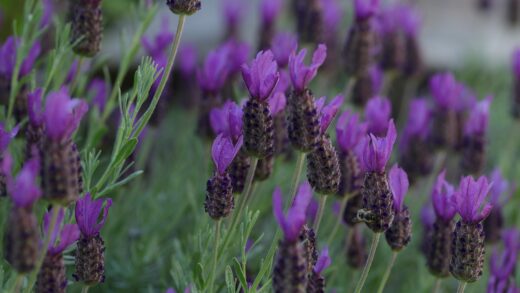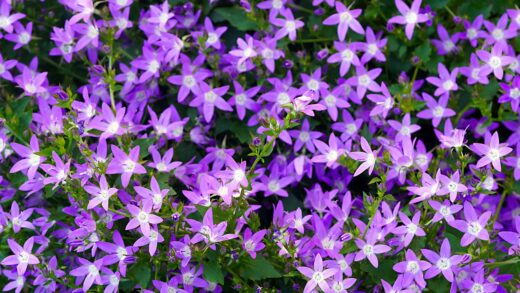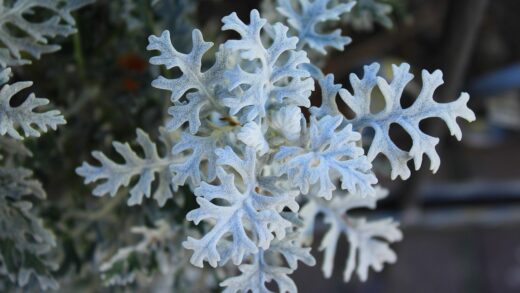Japanese maples are renowned for their delicate beauty, graceful forms, and stunning foliage that often changes dramatically with the seasons. Providing the right care is not merely about keeping the tree alive, but about enabling it to thrive and display its full ornamental potential for decades to come. Successful cultivation hinges on understanding the plant’s fundamental needs, which revolve around a balanced approach to location, soil, water, and protection. Mastering these core principles will ensure your Japanese maple becomes a cherished centerpiece in the garden, a living sculpture that evolves through the year. Caring for these trees is a rewarding experience that connects the gardener to the subtle shifts of nature. The journey begins with selecting the right location and continues with consistent, thoughtful maintenance. This commitment is repaid with unparalleled elegance and vibrant color.
Understanding the basics of japanese maple care
The foundation of successfully growing a Japanese maple lies in replicating its native understory habitat as closely as possible. These trees naturally grow in the dappled light beneath larger forest canopies, which protects them from the harshest elements. Therefore, selecting a site that offers protection from scorching afternoon sun and strong, drying winds is the single most important decision you will make. This careful placement prevents common issues like leaf scorch and windburn, which can detract from the tree’s appearance and stress its overall health. A location with morning sun and afternoon shade is often the ideal compromise, providing enough light for vibrant leaf color without the risk of damage.
Soil composition is another critical factor that directly impacts the health of the root system. Japanese maples thrive in well-draining, slightly acidic soil that is rich in organic matter. Heavy clay soils that retain excessive moisture can lead to root rot, a fatal condition for these sensitive trees. Conversely, sandy soils that drain too quickly can make it difficult to maintain adequate moisture levels. Before planting, it is highly advisable to amend the native soil with compost or other organic materials to improve its structure and fertility. This initial soil preparation creates a welcoming environment for the roots to establish and expand, setting the stage for a healthy, vigorous tree.
Consistency in care is paramount, especially during the tree’s formative years. This involves establishing a regular watering schedule, monitoring for any signs of stress or pest activity, and providing appropriate seasonal protection. Young trees are particularly vulnerable to drought and extreme temperatures, so they require more vigilant attention than mature, well-established specimens. Developing a routine of checking the soil moisture, inspecting the leaves, and observing the tree’s overall posture will allow you to respond to its needs proactively. This attentive approach helps prevent small issues from escalating into significant health problems.
Finally, it is essential to have patience and adopt a long-term perspective when caring for a Japanese maple. These are slow-growing trees, and their ultimate shape and character develop over many years. Resist the temptation to over-prune or over-fertilize in an attempt to accelerate growth, as such actions often do more harm than good. Instead, focus on providing a stable and nurturing environment that allows the tree to grow at its natural pace. The reward for this patient and gentle approach is a beautifully structured tree that adds a sense of tranquility and timeless elegance to the landscape.
More articles on this topic
Selecting the ideal location
The quest for the perfect location for a Japanese maple begins with an assessment of sunlight exposure throughout the day and across different seasons. While many varieties are known for their vibrant colors, these colors are often best expressed when the tree receives a few hours of direct morning sunlight. However, the intense, direct sun of the afternoon, particularly in warmer climates, can be detrimental, leading to scorched leaf margins and a washed-out appearance. The ideal scenario is a spot that is bathed in gentle morning light and then protected by the shade of a building or larger trees during the hottest part of the day. Observing the path of the sun across your garden before planting is a crucial step.
Beyond sunlight, protection from wind is a non-negotiable requirement for the delicate foliage of a Japanese maple. Strong, persistent winds can quickly dehydrate the leaves, causing them to become tattered, brown, and brittle, a condition known as leaf tatter or windburn. Planting on the leeward side of a building, a dense hedge, or a fence can provide the necessary shelter. Avoid open, exposed areas or natural wind tunnels between structures. Creating a calm microclimate is essential for preserving the pristine and elegant appearance of the leaves, which is the primary reason for growing these magnificent trees.
The surrounding landscape and other plants also play a role in choosing the right spot. Japanese maples have shallow, fibrous root systems that do not compete well with aggressive, water-hogging roots of larger trees or shrubs. Planting too close to a massive oak or a thirsty willow can lead to a constant battle for moisture and nutrients, which the maple is likely to lose. Ensure there is adequate space for the root system to expand without interference. Furthermore, consider the tree’s mature size and shape, ensuring it will have room to grow into its natural form without being crowded by other plants or encroaching on walkways and buildings.
Lastly, consider the visual context and how the Japanese maple will integrate into your overall garden design. These trees are focal points, so their placement should be intentional. Position it where its seasonal changes can be appreciated from a window, a patio, or a favorite garden bench. Think about the backdrop; the vibrant reds and oranges of an autumn maple look stunning against a dark evergreen background. The placement should not only meet the tree’s horticultural needs but also maximize its aesthetic impact, making it a true centerpiece of your garden.
More articles on this topic
Soil preparation and requirements
Japanese maples are particular about their soil conditions, and providing the right foundation is crucial for their long-term health. The ideal soil is one that is consistently moist but never waterlogged, a balance achieved through excellent drainage. To test the drainage in your chosen spot, dig a hole about a foot deep and fill it with water; if the water has not drained away within a few hours, the site has poor drainage. In such cases, you must take steps to improve it, as standing water is a death sentence for a maple’s roots. Amending the soil with organic matter like compost or pine bark fines can significantly improve its structure and drainage capacity.
The pH level of the soil is another important consideration. Japanese maples prefer a slightly acidic soil, with a pH ranging from 6.0 to 7.0. Soil that is too alkaline can lead to nutrient lockout, particularly of iron, resulting in a condition called chlorosis, where the leaves turn yellow while the veins remain green. You can test your soil’s pH with a simple kit available at most garden centers. If your soil is too alkaline, you can lower the pH over time by incorporating materials like elemental sulfur, sphagnum peat moss, or fertilizers formulated for acid-loving plants. Avoiding the application of lime near your maple is also critical.
Creating the optimal soil mixture involves more than just digging a hole and backfilling with the native earth. When planting, it is beneficial to create a wide planting area amended with high-quality organic material. A good practice is to mix one part compost or well-rotted manure with two parts of the native soil. This amended mixture encourages the roots to grow outwards into the surrounding earth rather than remaining confined within an overly enriched planting hole. This process helps the tree establish a broad and stable root system, which is essential for its stability and ability to access water and nutrients.
Mulching is the final, essential step in managing the soil environment for a Japanese maple. Applying a two- to three-inch layer of organic mulch, such as shredded bark, pine straw, or compost, over the root zone offers numerous benefits. Mulch helps to conserve soil moisture by reducing evaporation, suppresses weed growth that would otherwise compete for resources, and moderates soil temperature, protecting the shallow roots from extreme heat in summer and cold in winter. It is crucial to keep the mulch a few inches away from the base of the trunk to prevent moisture buildup, which can lead to bark rot.
Watering and moisture management
Proper watering is a delicate balancing act when it comes to Japanese maples; both too much and too little can cause significant stress. The goal is to maintain consistently moist soil, akin to a well-wrung-out sponge, without ever allowing it to become soggy or completely dry. For newly planted trees, this is especially critical during the first two years as their root systems become established. During this period, you should check the soil moisture every few days, especially during warm or dry weather. A deep, thorough watering once or twice a week is generally more effective than frequent, shallow sprinklings, as it encourages roots to grow deeper into the soil where moisture is more reliable.
The frequency and amount of water required will vary depending on several factors, including climate, soil type, and the tree’s location. A maple planted in sandy soil will require more frequent watering than one in a heavier loam, while a tree exposed to more sun and wind will lose moisture faster than one in a protected, shady spot. The best way to determine if it’s time to water is to check the soil manually. Dig down two to three inches with your finger; if the soil feels dry at that depth, it is time to provide a good, deep soak. Learning to read these environmental cues is more reliable than sticking to a rigid, predetermined schedule.
Overwatering is one of the most common mistakes made in Japanese maple care and can have dire consequences. When the soil is saturated with water, the air pockets that roots need for respiration are filled, effectively suffocating them. This leads to root rot, a fungal disease that causes the roots to decay, preventing them from absorbing water and nutrients. Symptoms of overwatering can paradoxically mimic those of underwatering, including wilting, yellowing leaves, and branch dieback. This is why it is crucial to check the soil moisture before adding more water, ensuring the top few inches have had a chance to dry out slightly.
Container-grown Japanese maples have different watering needs than those planted in the ground and require much more vigilant moisture management. The soil in pots dries out significantly faster, especially on hot or windy days. During the peak of summer, a potted maple may need to be watered daily. It is essential to ensure the pot has ample drainage holes to prevent water from pooling at the bottom. When you do water, continue until you see water flowing freely from the drainage holes, which ensures the entire root ball has been thoroughly moistened.
Fertilization and nutrient needs
Japanese maples are not heavy feeders, and a conservative approach to fertilization is always the best strategy. In many cases, if the tree is planted in soil that is rich in organic matter and is mulched annually with compost, it may not require any supplemental fertilizer at all. Over-fertilizing is a far greater danger than under-fertilizing, as it can lead to excessive, weak growth that is susceptible to pests and diseases, and can also cause leaf scorch. The primary goal is to support steady, healthy development, not to force rapid, unnatural growth.
If you determine that your maple does need feeding, perhaps due to poor soil or signs of nutrient deficiency like pale leaves or stunted growth, the timing and type of fertilizer are critical. The best time to fertilize is in the early spring, just as the new buds begin to swell. This provides nutrients when the tree is entering its most active growth phase. Avoid fertilizing after mid-summer, as this can encourage a late flush of new growth that will not have time to harden off before winter, making it vulnerable to frost damage. A slow-release granular fertilizer formulated for trees and shrubs, or one specifically for acid-loving plants, is an excellent choice.
When choosing a fertilizer, look for a balanced formula with a relatively low nitrogen number (the first number in the N-P-K ratio). High-nitrogen fertilizers promote lush, green foliage at the expense of root development and stem strength, which is not desirable for the long-term health and structure of a Japanese maple. A formulation like 10-5-5 or a similar balanced ratio is generally appropriate. Organic options such as well-rotted manure, blood meal, or cottonseed meal are also excellent as they release nutrients slowly and improve the soil structure at the same time. Always follow the application rates on the product label to avoid burning the tree’s sensitive roots.
The method of application is just as important as the choice of fertilizer. The fertilizer should be applied evenly over the entire root zone, which extends from the trunk out to the dripline (the outermost circumference of the branches) and slightly beyond. Do not concentrate the fertilizer near the base of the trunk. After spreading the granular fertilizer, gently work it into the top inch of soil or mulch and then water the area thoroughly. This watering helps to dissolve the granules and carry the nutrients down to the root zone where they can be absorbed by the tree.
Seasonal care considerations
As the seasons change, so do the care requirements of your Japanese maple, and adapting your routine is key to its year-round health. In the spring, as the tree awakens from dormancy, your focus should be on providing the resources it needs for its initial growth surge. This is the ideal time to apply a slow-release fertilizer if needed and to replenish the layer of mulch around its base. It is also a time to be vigilant, as the tender new leaves are particularly susceptible to damage from late frosts. If a frost is forecast, you can protect a smaller tree by covering it overnight with a blanket or frost cloth, removing it in the morning once temperatures rise.
Summer brings the challenges of heat and potential drought. The primary task during this season is to ensure the tree receives adequate and consistent moisture, especially during prolonged dry spells. The intense summer sun can also be a threat, so this is when you will see the benefits of having chosen a site with afternoon shade. For potted maples, summer care is even more intensive, as they may require daily watering and should be monitored closely for signs of heat stress, such as wilting or drooping leaves. Avoid any significant pruning during the heat of summer, as this can cause undue stress to the tree.
Autumn is when Japanese maples put on their most spectacular show, and your role is to help them prepare for the coming winter. As temperatures begin to cool, you can gradually reduce the frequency of watering. This is also a good time to do some light cleanup, removing any dead or damaged twigs. Rake up and dispose of fallen leaves, especially if the tree has shown any signs of fungal diseases during the growing season, as this can help to reduce the chance of reinfection the following year. Enjoy the brilliant fall colors, which are a sign that the tree is successfully moving toward dormancy.
Winter care is primarily about protection. For young trees, especially in colder climates, protecting the trunk from sunscald and frost cracking is important. This can be done by wrapping the trunk with a commercial tree wrap. A thick layer of mulch over the root zone is also crucial, as it insulates the roots from freezing temperatures. For container-grown maples, winter protection is even more critical, as the roots are exposed to the cold from all sides. The pot should be moved to a sheltered location, such as an unheated garage or a protected porch, or it can be “heeled in” by burying the pot in the ground to insulate it.


















